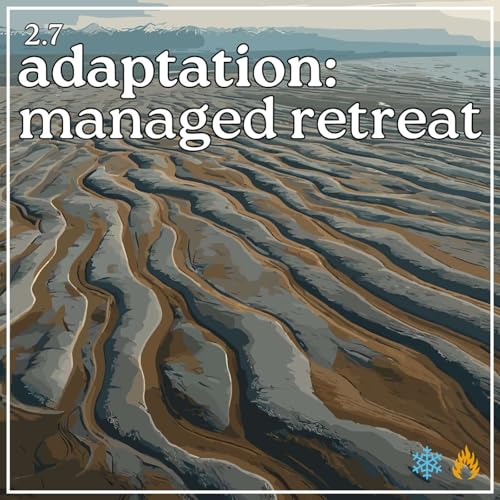
Ice and Fire
カートのアイテムが多すぎます
カートに追加できませんでした。
ウィッシュリストに追加できませんでした。
ほしい物リストの削除に失敗しました。
ポッドキャストのフォローに失敗しました
ポッドキャストのフォロー解除に失敗しました
-
ナレーター:
-
著者:
-
Sol Creative
このコンテンツについて
Listen to climate change in Alaska through place-based narrative.
Ice and Fire is a podcast that uses audio storytelling to share cryosphere change as the global climate warms. The cryosphere is all of Earth's frozen surface water including frozen freshwater lakes, glaciers, permafrost and sea ice -- frozen saltwater.
It only takes a small temperature increase for water to melt or thaw from solid into liquid form, yet a cascade of impacts result when we lose ice to fastly flowing liquid.
Season one emphasizes the significance of glacier melt, and connects listeners to distant glaciers rapidly responding to anthropogenic climate change through dialogue with researchers, traditional knowledge-bearers, and by sharing audio of ice-melt in real time.
Season two, available now, is all about permafrost thaw.
-
 2025/08/1628 分
2025/08/1628 分カートのアイテムが多すぎます
ご購入は五十タイトルがカートに入っている場合のみです。カートに追加できませんでした。
しばらく経ってから再度お試しください。ウィッシュリストに追加できませんでした。
しばらく経ってから再度お試しください。ほしい物リストの削除に失敗しました。
しばらく経ってから再度お試しください。ポッドキャストのフォローに失敗しました
ポッドキャストのフォロー解除に失敗しました
-
 2025/06/1023 分
2025/06/1023 分カートのアイテムが多すぎます
ご購入は五十タイトルがカートに入っている場合のみです。カートに追加できませんでした。
しばらく経ってから再度お試しください。ウィッシュリストに追加できませんでした。
しばらく経ってから再度お試しください。ほしい物リストの削除に失敗しました。
しばらく経ってから再度お試しください。ポッドキャストのフォローに失敗しました
ポッドキャストのフォロー解除に失敗しました
-
 2025/04/1016 分
2025/04/1016 分カートのアイテムが多すぎます
ご購入は五十タイトルがカートに入っている場合のみです。カートに追加できませんでした。
しばらく経ってから再度お試しください。ウィッシュリストに追加できませんでした。
しばらく経ってから再度お試しください。ほしい物リストの削除に失敗しました。
しばらく経ってから再度お試しください。ポッドキャストのフォローに失敗しました
ポッドキャストのフォロー解除に失敗しました


